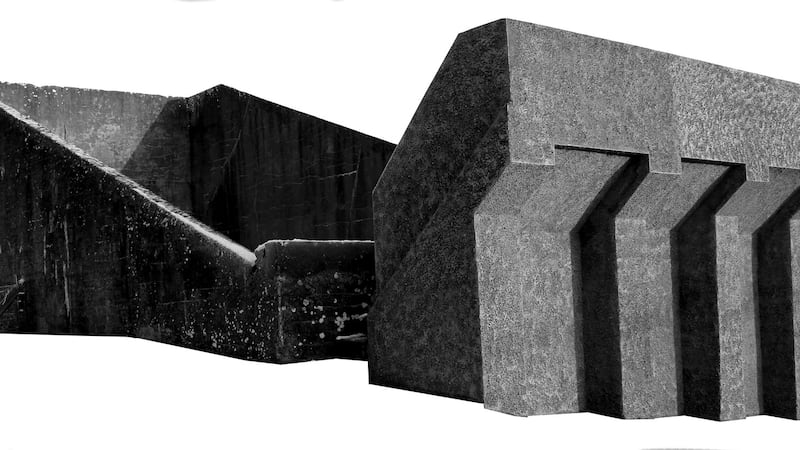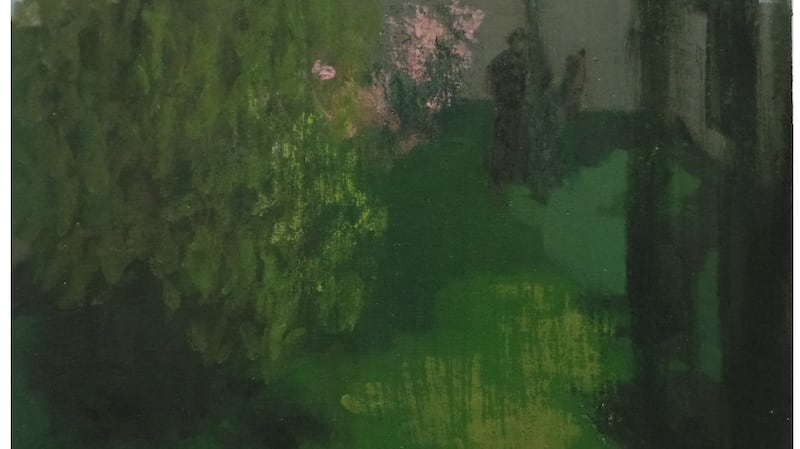PASTURES, CURATED BY LEAH CORBETT
[ blackchurchprint.ieOpens in new window ]
★★★★☆

Co-incidentally, while curator Leah Corbett and others at the Black Church Print Studio were putting the finishing touches to Pastures, the new exhibition at The Library Project in Temple Bar, hundreds of farmers were arriving in Dublin city centre on tractors to protest about the lack of movement on beef prices. Apart from anything else, the Dublin protests, which began last year, are a stark reminder of the growing urban-rural divide. For Pastures, Corbett has selected work by five artists each of who, she considered, offers a distinctive, illuminating perspective on rural life in contemporary Ireland.
Corbett, who is from Co Tipperary, is a fine arts graduate of Cork’s Crawford College of Art and Design. She is now based in Belfast and is a co-director of Catalyst Arts there. Last year she picked up two curatorial awards, the Black Church Emerging Curator Award, which led to Pastures, and Kilkenny Arts Office’s Emerging Curator in Residence Award. That may be two more emerging curator awards than you knew existed, but the evidence is that they facilitate arts organisations in programming and devising exhibitions and, rather than replacing or eclipsing artists, they are useful in identifying emerging artists.
Not purely emerging artists, of course. Of the five in Pastures, Dorothy Smith is well established. She is unusual in that her work centres on drawing. For a considerable time she has explored the urban fabric through drawing, looking particularly at how people encounter, experience and negotiate spaces, including those slightly anomalous spaces that are at some level communal or public but also problematic. Here she shows two, perhaps earlier, paintings that are direct observations of rural settings, steeped in the reality of the working farmyard, a cowshed and a dairy.

Also relatively well established, Katie Watchorn is from just such a working farm background. She has been exceptionally good at devising a sculptural language, with great feeling for materials, that encapsulates the nature of the farming life in all its dimensions, and that includes the significant element of complex relationships with animals that livestock farming entails, not just from an ethical point of view but as lived experience. Rather than ignoring it, she homes in on the contradictory amalgam of tenderness, care and an inevitable degree of callousness involved in farming animals encountered beyond the bubble of the sanitised urban world. She does so beautifully in the piece included here, A Calf Remembered.
Caitríona Leahy who also features in another five-artist landscape exhibition, How the Land Lies at the Sirius Arts Centre in Cobh, shows two pieces, Monuments to Memory. They are formidable, densely textured images of former handball alleys. The structures remain, appearing imposing and defensive, but they are relics of an earlier phase of communal life, pretty much disused, occasionally re-purposed for agricultural utility. Kenneth O’Halloran, notably, made them the subject of an extensive taxonomic photographic project. Leahy abstracts them, giving them the weight of archeological monuments in chine-collé prints.
Hayley Gault, farming artist-curator, contributes a reflective, analytical text, Things me and my father have in common. It is, in part, a wary, uneasy consideration of the precarious position of the farmer in the contemporary urbanised world: “We are part of the business of production in a culture of consumption.”
With his sculptural installation, Westwood Jazz No 27, Ronan Smyth considers fitting in or not fitting in to that culture of consumption with its implicit class system and codes of taste, gender and worth. The sculpture is an eclectic jarring mix of materials, forms and techniques that embody and mock arbitrary notions of prestige, social sophistication and good taste.
Pastures is a compact show of relatively few, though several quite outstanding exhibits.
THE IMAGINED GARDEN, CLIFFORD COLLIE
Solomon Fine Art, Balfe St, Dublin. Until February 1st, solomonfineart.ie
★★★★☆

Clifford Collie’s work is quiet, nuanced and deft. Appropriately enough, the paintings in his Imagined Garden are predominantly green, though he has long been based in Spain, close to Zaragosa and not that far from the usually parched, semi-arid and non-green Monegros desert. He has noted that what we see in this exhibition follows on from the loss of his sister. The garden is partly a garden of the mind, an idealised space, and partly a space in memory, the garden of childhood. While they are mostly uninhabited, one of the paintings, I Can’t Imagine You Anywhere Else But Here, does include a distant, indistinct but definite figure.
Each work is an arrangement of greens, with just an occasional sprinkling of pinks, and each composition is layered, assembled from a judicious mix of tones and textures, creating openings and paths to accommodate eye and mind, allowing room for thought. A certain melancholy persists, understandably, but there is nothing maudlin or sentimental about the crispness of the paintings’ delivery.
Collie has, in a way, always concentrated on an indeterminate space. His painting was influenced early on by classical Dutch still life, technically superb works that celebrate vitality while confirming its inevitable transience. Gourds and other parched forms took on that role in paintings he made in Spain in the early 2000s. Now, in The Imagined Garden, there is a vegetative lushness, a luxuriance, and a muted though unmistakable radiance.
















